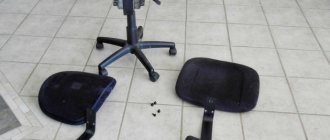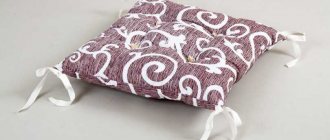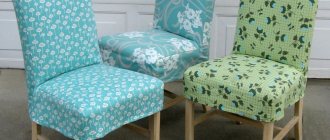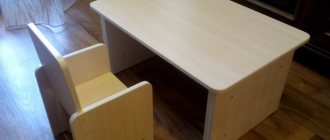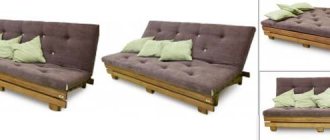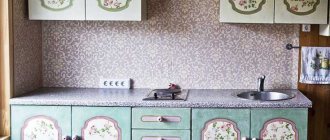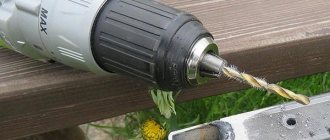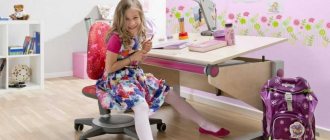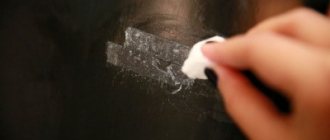Currently, some interior products are made from artificial materials.
But many people prefer wooden furniture.
Therefore, in some cases in everyday life there is a need to restore or repair wooden products (for example, chairs).
And it is not always possible to use traditional fasteners using nails, screws and other elements for connection.
Very often, during use, such chairs become loose and break.
Before you start working, you need to inspect the chair. If all the crossbars begin to come out of the grooves or wobble in the grooves, then it is better to disassemble the chair completely.
Often the best option is to glue the necessary fragments together.
The skillful hands of a home craftsman may well save him.
For this reason, you need to know which glue is suitable for repairing wooden structures.
Any type of glue should be chosen based on the specifics of its use.
Therefore, before purchasing, you need to get an idea of what properties it should have, that is:
- Drying time;
- Bonding density;
- Moisture resistance;
By following the instructions and taking into account all the gluing requirements, everyone has the opportunity to achieve the desired effect with their own hands. - Versatility of use;
- Strength of connection;
- Degree of toxicity.
It is necessary to first familiarize yourself with the characteristics of a particular product in order to make the right choice.
How to glue a wooden chair?
Share on social media networks:
Tables, chests of drawers, chairs, cabinets and other interior items made of natural wood are incredibly beautiful and beautiful furniture that is very pleasing to the eye with its appearance. But what should you do if it is already so old that it is falling apart, how to glue a wooden chair together? In fact, this is not a particularly complicated procedure, and we will help you cope with it if the item is so dear to you that you do not plan to dispose of it, or you simply do not have the opportunity to do so.
Main types of adhesives and their characteristics
- PVA: no toxicity, fast acting, unlimited shelf life.
PVA glue is in demand in the furniture industry, the manufacture of interior items, and, if necessary, to join any wooden parts.
Epoxy glue has become massively popular because it firmly bonds almost all materials and perfectly levels the surface.
BF-2 glue is suitable for gluing wood; it has an optimal range of qualities - it is not susceptible to fungus, oils, gasoline, and is waterproof.
Syndeticone glue is excellent for gluing wood and gluing various materials to it.
Polyurethane waterproof wood adhesive is considered the most resistant to stress and vibration.
What glue is best to use for gluing chairs?
The first question that arises at the beginning of the chair repair process is how to glue a wooden chair? There are several answers to this question, and which glue you choose depends entirely on your own preferences.
The well-known PVA wood glue is very popular when gluing wood.
Important! When purchasing PVA, choose those types of glue that are intended for gluing wooden furniture.
Furniture properly glued with PVA glue is quite strong and reliable. The only drawback of this glue is that it varies greatly in quality, depending on the manufacturer:
- We can recommend that you use PVA, which was produced in the USA or Western Europe.
- You can use another type of glue, whose chemical composition is absolutely neutral. For example, you can use Moment wood glue.
Important! Neutrality of the chemical composition is essential to ensure that the wood does not deform or change its color.
- To restore chairs during repairs, you can use a glue called “Fish Glue”. This glue is made from fish remains, so it is entirely natural.
Important! It is most popular when it is necessary to glue antique furniture together in order to preserve the authenticity of the item.
Professional companies that make furniture prefer PVA glue; they trust it. They also note that it is necessary to select a high-quality and reliable manufacturer.
Video material
That's the whole process of gluing chairs, which will quite simply help you get rid of swaying and creaking furniture. If the tenon joints of the chairs are sufficiently damaged or the grooves become much smaller, it is necessary to increase them. For help in this matter, you can contact a professional workshop.
Wooden furniture has always been held in high esteem and to this day remains a source of pride for owners. However, nothing lasts forever and everything falls into disrepair one day. Our specialists have sufficient experience in the repair and restoration of wooden furniture and will tell you how to glue a wooden chair together.
Directly re-gluing chairs
After you have cleaned the tenon joints, you can begin gluing directly.
Important! PVA glue takes quite a long time to dry, but fortunately the time required for it to harden is indicated on the label.
Proceed as follows to glue a wooden chair:
- Securely fasten all your glued parts so that they are pressed directly against each other with the necessary pressure.
- To securely fasten the glued parts, a clamp or special tension belts are used.
- To ensure that the varnished surface of the wood is not damaged after this and that no marks remain on it, be sure to use spacers.
Important! You can use wooden blocks or thick rubber as spacers, but fabric will not work.
- You will need a small number of clamps to secure all the parts. Using straps, you can secure several sides at the same time, which is incredibly convenient.
Important! Check the tension of all belts until the adhesive solution has completely cured. If they become loose, tighten them immediately.
Urea resin
Urea resin adhesive is prepared from thiourea or synthetic urea through a heating process. Such compositions create very strong compounds of wood products. They are resistant to moisture and can be used in extreme conditions.
This glue is acid-curing, and after mixing with a hardener its service life is short - up to 4 hours. It is used for hot pressing.
Reference! This glue is transparent, which is very beneficial when gluing wooden furniture.
How to glue a chair leg
1. Carefully remove the leg from the nest, being careful not to split the wood.
2. Remove old glue and apply fresh glue.
3. Place a weight on the seat. Remove any excess glue that appears.
Old chairs, made of solid wood at the end of the last - beginning of this century, usually have simple connections between the front legs and the seat. They are simply tenoned into the frame under the seat. A chair of this design always becomes loose easily. Even if such a defect has already been eliminated once, a new repair will be required in a few years.
After all, the chair is subject to load not only from above: it is moved, tilted, rearranged, which is why simple adhesive seams are destroyed. Here the leg literally becomes a lever, which sooner or later will definitely separate the adhesive seam. To make the whole structure stable again, remove the wobbly leg from the frame and then re-glue it.
At the upper end of the leg, completely remove the old glue with a knife or chisel, being careful not to scratch the wood.
If the trunion (the upper, sometimes tapered end of the leg that is inserted into the seat socket) is slightly damaged, make a “bandage” from a strip of paper that should not be wider than the length of the trunion. For greater stability, coat individual turns of paper with glue. Finally, glue the leg into the cleaned socket on the underside of the seat.
If a chair has curved legs, then it is better to repair it in stages, that is, treat the legs not all at once, but one by one. This makes it easier to determine exactly how to glue the leg so that the chair does not rock.
If the swinging parts cannot be separated, try to spread the chair frame as far as possible and squirt glue into the groove.
However, if it is possible to pull out the parts, be sure to use it, because in this case the connection can be given additional stability by inserting a wedge. At the end of the axle, make a slot with a saw, into which then drive a thin wedge that barely protrudes beyond the end of the axle. It is easy to make from scrap wood. It will expand the trunnion slightly, resulting in a strong connection to the walls of the hole.
Pull the parts as far as possible and inject fresh glue into the tenon socket.
Epoxy resin
Epoxy resin glue is good for gluing wood together. It's also great for filling gaps. It is waterproof and has optimal strength characteristics.
The glue is two-component, that is, it consists of a resin and a hardener. To prepare, they need to be mixed in a certain proportion, as indicated in the instructions. The positive side is that this furniture glue does not shrink.
Reference! Different ratios of elements give the glue different properties, which can be controlled under certain conditions. What’s also good is that gluing does not require long pressing.
Stripping tenon joints
Before you start gluing the chairs, clean all connecting areas of old glue. To make it much easier to scrape off, apply warm vinegar or a small amount of solvent, then remove all residue from the surface.
On some upholstered chairs, the seat panels are not tightly connected to the frame, and as a result, it loses the necessary stability. This defect can be eliminated if triangular or trapezoidal solid wood chocks are tightly screwed to the frames that form the internal corners of the frame. This will strengthen the frame, it will remain stable even if the chair, for example, tips over or begins to be moved.
If the chair is used frequently and is heavily loaded, the reinforcements may also become loose. In this case, replace the old screws with new ones: they should be slightly thicker than before.
Drill holes in the corner chocks and frames so that the heads of the screws sink into them.
For corner chocks, choose screws of such length that they, without going through the frame, provide sufficient strength to the joint.
It is better to cut a new log from well-dried hardwood.
A careful inspection of the old chocks will help you determine whether they need to be replaced or whether it is enough to scrape off the old glue and apply fresh glue, and then screw in new screws. Be sure to replace cracked or split logs with new ones, which must be cut out of hard wood exactly according to the shape of the old ones, then glued into the drawer frame and screwed with screws.
Adhesive joints must be secured with clamps, clamps or cords until the glue has completely dried.
The glue must dry under pressure. Therefore, it is recommended to tighten the newly glued frame using clamps, clamp vices or cords and keep it that way for about 12 hours. At the same time, you should not create too much pressure, otherwise a lot of glue will leak out of the grooves. After some time, loosen the tension a little.
Make sure that when tensioning, the chair frame is at the correct angle and is not distorted. This requirement is easy to fulfill when repairing ordinary chairs. The situation is more complicated, for example, with English chairs or rocking chairs. However, at least the front of the chair can be controlled using a plumb line.
Enterosorbents for diarrhea
Smecta is a famous French drug. The main active ingredient is diosmectite. Release form: light yellow suspension with a caramel odor. Packaging – sachets: 3 grams of substance in each. Penetrating into the intestines, the drug envelops the walls of the organ, maintaining the life expectancy of the mucous membrane, thereby maintaining the natural protective barrier. Protects the body from the harmful effects of bacteria, toxins, microorganisms. For diarrhea, the contents of three sachets are diluted in water and taken orally once. The drug is excreted unchanged. An overdose can cause constipation and an allergic reaction.
Enterosgel
Domestic fixative remedy for diarrhea. Paste in bags of 22 grams. The active component is polymethylsiloxane polyhydrate. Enterosgel binds toxins, poisons, waste products of microorganisms, salts, and alcohol. Removes harmful substances from the body, restores the intestinal microflora balance. Purpose of the drug:
- Intoxication of the body;
- Allergic reactions;
- Intestinal infections;
- Kidney failure;
- Hepatitis.
The contents of the sachet are mixed with water (proportion 1 to 3), drunk before meals or 2 hours after, 3 times a day.
Enterodesis
Russian medicine. The main element is povidone. Available in powder format. Binds toxins, enhances kidney function - removes harmful substances. Purpose: poisoning, intoxication, toxicosis. As a fixative, take a solution from one sachet before meals, 2 times a day. Contraindications:
- Cardiovascular failure;
- Bronchial asthma;
- Acute nephritis;
- Hemorrhages.
Activated carbon
A medicine known to all residents of the post-Soviet space. It consists of 100 percent active component – activated carbon. Collects decay products, toxins, poisons. Adsorbs gases. Reduces the absorption of harmful substances.
- Flatulence;
- Allergic reactions;
- Food, chemical poisoning;
- Alcohol intoxication;
- Dysentery;
- Salmonellosis.
Diarrhea is treated according to the following scheme: 1 tablet per 10 kilograms of weight, crushed, washed down with water. Take the medication before meals, an hour after.
Softening old glue with steam
Steam flows from the kettle on the stove through a rubber or plastic hose to the socket in the chair. Hot water will flow down the tenon nest wrapped in a cloth. This way the remaining glue will dissolve faster.
To thoroughly strengthen a loose connection, the individual parts must first be separated. To do this, especially on frames with crossbars, it makes sense to separate the still quite strong adhesive seams.
If the chair wobbles not only because the glue joint has become loose, but also because the legs are different lengths, you should wait until the frame is glued back together. Only after this will it be possible to accurately determine the difference in the length of the legs.
If the glue is very strong, try steaming it. Regular glue dissolves in water. Steam can soften the glue even in tightly closed seams.
For this purpose, use a rubber hose that is used for squeezing juices, or buy a thin gasoline hose with a diameter of 6 or 7 mm at an auto parts store. Attach a suitable metal tube to both ends of the hose, insert one of them into the drilled plug, and it, in turn, into the spout of the kettle. This way you can direct the steam to the right place.
Before you start steaming, move a chair closer to the stove and position it so that you can easily reach the area to be treated. Make sure that the water formed as a result of cooling the steam does not drip onto other places, especially the soft upholstery.
What foods should you exclude from your diet if you have constipation?
If people suffer from constipation, they should exclude the following foods from their daily menu:
- pasta and bakery products made from premium flour;
- confectionery, baked goods;
- canned food;
- hard-boiled eggs;
- any dishes made from potatoes, rice, semolina, millet, buckwheat;
- fatty broths made from fish, poultry or meat;
- chocolate;
- red wine;
- It is also recommended to avoid eating blueberries, pomegranates, lingonberries, and dogwood fruits (both fruits and juices squeezed from them).
These products contain large amounts of elements that interfere with the normal functioning of the intestinal muscles. By interacting with digestive enzymes, they slow down the process of bowel movement.
Antidiarrheals for children
Gastrolit. Country of origin: Poland. Release form: powder for preparing a solution. Components of the drug: sodium chloride, glucose, potassium bicarbonate, potassium chloride, chamomile extract. Restores water-electrolyte balance, has an astringent, antidiarrheal effect. All substances included in the composition are completely eliminated from the body.
- Diarrhea;
- Food poisoning;
- Acetonemic syndrome.
Taking the medicine is prohibited in case of hyperkalemia, hypersensitivity to the components of the drug and renal failure. In children, use is indicated from the first year of life. Dilute the contents of the sachet in 200 milliliters of water. Course of administration: first dose at the rate of 50 milliliters per kilogram of weight, subsequent dose of 10 milliliters per kilogram of weight after defecation. Drink until symptoms of diarrhea disappear.
Traditional medicine
- A decoction of pomegranate peels has an antimicrobial, fastening effect. Pour boiling water over the powder and cook for 20 minutes in a water bath. Take 6 tablespoons every 4 hours.
- Pear. This product is superior in its action to pharmaceutical binders. Quickly destroys the disease. The process of preparing the decoction: pour dry pears with water, cook for 15 minutes. Take 4 tablespoons every 3 hours. If you don't have dried pears, you can eat them baked in the oven.
- Beans. Another effective folk recipe for diarrhea is bean broth. It is very easy to prepare: pour a tablespoon of beans with a glass of boiling water and cook for 20 minutes. Take a tablespoon of decoction every two hours.
- Lemon. Lemon juice eliminates the genesis of intestinal disorders. To cleanse the organ of accumulated toxins, take lemonade: pour the juice of one fruit into a glass of water, add a teaspoon of honey, and drink the resulting mixture.
- Rice. Adult intestines are treated with a paste of ground rice. Prepare strictly according to the following recipe: fry 5 tablespoons of grain until golden brown, grind, pour boiling water. Eat a tablespoon every 2 hours. Rice secretes mucus, which coats the walls of the gastrointestinal tract and protects the body from accumulated poisons and toxins.
- Potato starch. Eliminates irritation of the mucous membrane, an excellent fixative. Dilute a teaspoon of starch in half a glass of water, drink in one gulp in the morning, at lunch, and in the evening.
- Cinnamon. Pour boiling water over a quarter teaspoon of cinnamon and a pinch of red pepper. Drink a tablespoon of solution every hour. An antiparasitic, antimicrobial agent normalizes the functioning of the gastrointestinal tract, removes accumulated poisons and toxins.
- Blueberry. Pour water over dried blueberries and cook for 20 minutes. Take a glass of decoction every 3 hours. This product has a binding effect. Important! Prepare a decoction only from dried berries; the fresh product is used in the treatment of constipation.
Probiotics
Bifidumbacterin. Manufacturer – Russia. Available in capsules. The drug contains live bifidobacteria. By taking the medication, the main cause of diarrhea – dysbacteriosis – is eliminated.
The product normalizes intestinal and vaginal microflora, starts metabolic processes, and destroys pathogenic microorganisms.
Treatment with capsules is indicated:
- As a prevention and treatment of dysbacteriosis;
- The presence of acute intestinal infections;
- Preparing the body before surgery;
- Imbalance of vaginal microflora;
- Poisoning.
The course of treatment is 10 days, 20 doses twice a day with meals or 20 minutes before meals.
Lactobacterin
Domestic suspension. Active ingredient: lactobacilli. Destroys pathogenic microflora, replenishes the balance of microorganisms. Improves metabolic processes, prevents the development of protracted forms of intestinal diseases. Prescribed in the following cases:
- Intestinal diseases;
- Somatic diseases complicated by diarrhea;
- Chronic colitis;
- Infectious diseases.
Taking the medication: dissolve the contents of the package with warm water, calculate a teaspoon of water - the dose of the drug, 5 doses, 3 times a day, 30 minutes before meals.
Advice from the experts
Before starting work, you need to prepare the necessary tools, clean the surfaces that will be glued and carefully study the instructions.
Reference! After gluing, it is important to press the elements for a while to ensure reliable adhesion. This must be done for at least 10 minutes.
When you need to glue it together forever, synthetic glues are better suited, but if you need to further disassemble the furniture, you should use a natural one, like casein or bone glue.
For light types of wood, it is better to use Joiner glue, which adapts to the shade of the material. Casein glue is contraindicated in this case.
When choosing PVA glue, you need to pay attention to the consistency. If it is too liquid, you should not take it, because this indicates hypothermia, which has a bad effect on the adhesive ability.
When choosing glue, it is better to give preference not to universal, but to special compounds that are intended for certain materials and conditions.
Source (full version): https://gidpokraske.ru/vidy-kleya/mebelnij-klej.html
